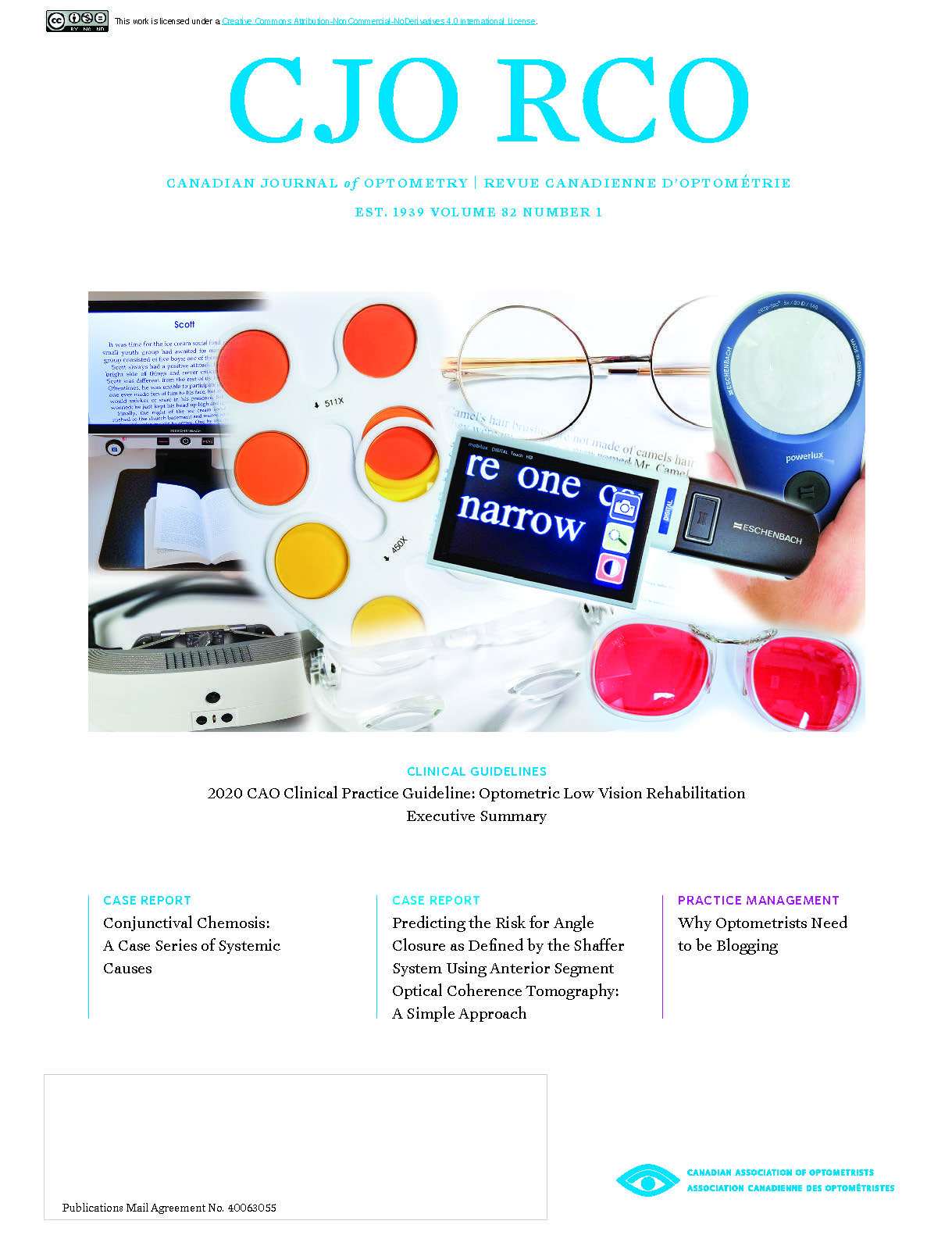Predicting the risk for angle closure as defined by the Shaffer System Using Anterior Segment Optical Coherence Tomography: A Simple Approach
DOI:
https://doi.org/10.15353/cjo.v82i1.1591Keywords:
: anterior chamber angle imaging, ASOCT, glaucoma, laser peripheral iridotomy, optical coherence tomographyAbstract
Purpose: To propose a simple non-invasive method for screening patients at risk for angle closure using anterior segment OCT. Methods: Scans of nasal and temporal iridocorneal angles in glaucoma suspect patients were performed using OCT. Upon identifying Schwalbe’s line, the integrated caliper tool was used to draw a line to the nearest point of the iris to produce a measure ‘S-I’. Gonioscopy was performed and angles graded according to Shaffer’s classification to assess the correlation between both methods. Results: Thirty-four images were available for analysis. Spearman correlation coefficients between S-I anf gonioscopy grades were 0.81 for nasal and 0.77 for temporal quadrants respectively. Intraobserver ICC calculations demonstrated excellent reproducibility (0.98 and 0.99 for nasal and temporal angles) and excellent interobserver correlation (0.94 and 0.93). The diagnostic cutoff value of S-I for occludable angles was established at 330mm.
Conclusion: S-I measurement strongly correlates with gonioscopy and may be a suitable alternative for evaluating risk for angle closure.
Published
How to Cite
Issue
Section
License
Copyright (c) 2020 Dan Samaha, OD, MSc, Sébastien Gagné, MD, FRSC, Marie-Eve Corbeil, OD, MSc, Pierre Forcier, OD, MSc

This work is licensed under a Creative Commons Attribution-NonCommercial-NoDerivatives 4.0 International License.


